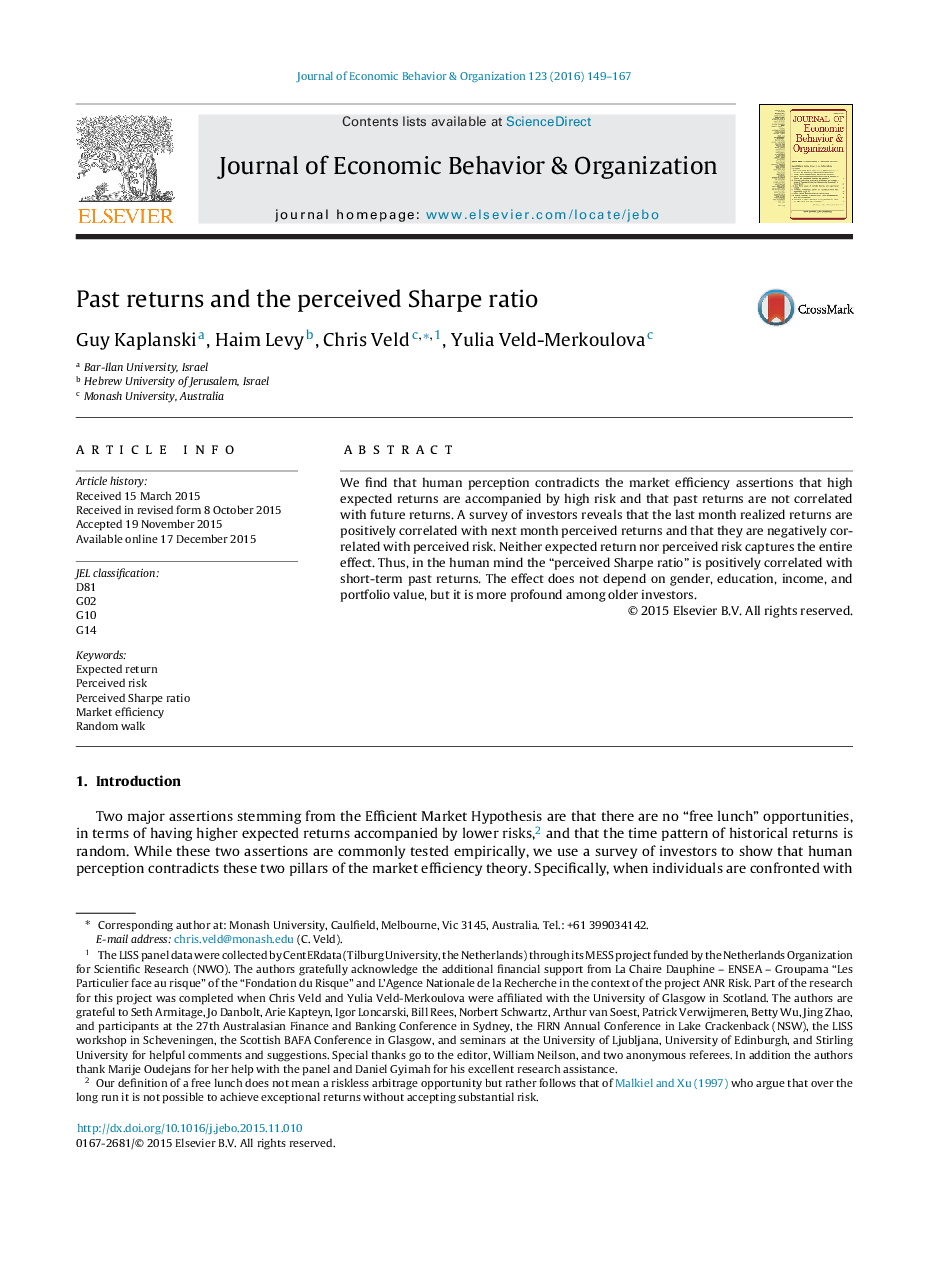| Article ID | Journal | Published Year | Pages | File Type |
|---|---|---|---|---|
| 883461 | Journal of Economic Behavior & Organization | 2016 | 19 Pages |
•Human perception contradicts the assertions that high return is accompanied by high risk.•Realized returns are positively correlated with perceived returns.•Realized returns are negatively correlated with perceived risk.•Higher perceived Sharpe ratios are also followed by more actual stock buying.
We find that human perception contradicts the market efficiency assertions that high expected returns are accompanied by high risk and that past returns are not correlated with future returns. A survey of investors reveals that the last month realized returns are positively correlated with next month perceived returns and that they are negatively correlated with perceived risk. Neither expected return nor perceived risk captures the entire effect. Thus, in the human mind the “perceived Sharpe ratio” is positively correlated with short-term past returns. The effect does not depend on gender, education, income, and portfolio value, but it is more profound among older investors.
